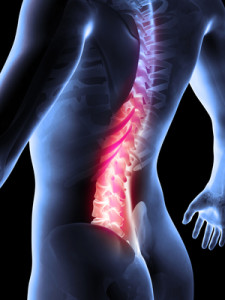 Medical coders for a hospital or general medical practice have an uphill climb – the number of codes they will be responsible for learning and knowing is immense when the ICD-10 transition occurs in October 2015. It would follow then that healthcare providers who specialize – like chiropractors – should consider the switch to ICD-10 less daunting because their preparation requires them to be most aware of the codes that apply only to their specialty. However, this reality doesn’t make the transition to ICD-10 any less intimidating for chiropractors, other specialty providers, and their coding staff.
Medical coders for a hospital or general medical practice have an uphill climb – the number of codes they will be responsible for learning and knowing is immense when the ICD-10 transition occurs in October 2015. It would follow then that healthcare providers who specialize – like chiropractors – should consider the switch to ICD-10 less daunting because their preparation requires them to be most aware of the codes that apply only to their specialty. However, this reality doesn’t make the transition to ICD-10 any less intimidating for chiropractors, other specialty providers, and their coding staff.
The ICD-10 Impact: Changes to Chiropractic Coding
No matter what field of medicine a healthcare professional practices, ICD-10 coding is mandatory. The codes are changing, and medical providers must comply. Chiropractic physicians are not exempt. Some of the must-know changes for chiropractic clinics include the following:
- There will be about 200 codes commonly used by chiropractors that are affected by the transition from ICD-9 to ICD-10.
- Chiropractic coding will now require diagnosis hierarchy: first neurological, then structural, then functional, and finally soft tissue will take coding precedence. For example, sciatica will carry more weight than degenerative disc disease because it is a neurological diagnosis over a structural diagnosis.
- Chiropractic coding will also require specificity of laterality, where applicable. This turns the diagnosis into a combination code – something that wasn’t available at all in ICD-9.
Chiropractors, just like many medical professionals, are dismayed at the work that ICD-10 will create for their practice, but the benefits of ICD-10 should not be forgotten. There are limitations to ICD-9. ICD-10 is providing chiropractors with more specific codes with which to diagnose a patient, which – when done correctly – should ultimately reduce claim denials and provide for accurate reimbursement. This ability to code in greater detail is all the more reason to accept the reality of ICD-10, prepare accordingly, and be ready to adapt.
Tools for Chiropractors to Adjust to ICD-10
The American Chiropractic Association (ACA) has issued a toolkit for chiropractic clinics providing detailed, downloadable resources to help clinics through the transition from ICD-9 to ICD-10. The toolkit includes the ICD-10 Mapping Tool to simplify the conversion of ICD-9 diagnosis codes to the ICD-10 equivalents. The kit also includes almost 200 codes that are commonly used in chiropractic clinics.
The mapping tool was developed in coordination with the American Academy of Professional Coders (AAPC) and uses a three-step mapping process to ensure accuracy, provide code selection tips, and instructional notes. The goal is to minimize the amount of time needed to look up the new ICD-10 version of commonly used chiropractic codes.
The ChiroCode Institute and the ACA recently set a universal standard for chiropractic practices to follow when it comes to coding and compliance. Ultimately, Medicare and other payers will release the codes that are “medically necessary” and that they will approve for claim submission. But beyond the ACA toolkit, there are even more tools available to simplify ICD-10 readiness. Discuss your practice’s needs – chiropractic or otherwise, before and after ICD-10’s implementation – with the experts at Provident Consulting.
